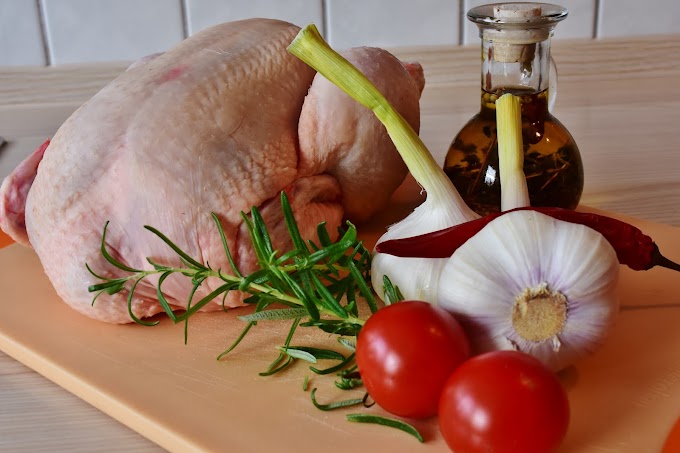The Ingredients used in cake making can be classified as Essential and optional out of which Flour , Sugar , Egg and Fat are essential where as Baking powder , Milk and Fruits are optional.
- Flour : We are making cake so we need flour with lower gluten content. If we used strong flour that is flour with high gluten Content our cake will be tough and dry and to eat and even if we use flour with low gluten content that is too weak flour ,the cake will sink or may flatten.
- Egg : Egg act as aerating agent when it is whipped as it will incorporate air when whipped so it should be whipped at high speed at beginning and moderate after sometime. Eggs also provides structure to Cake. Moreover , enhances Nutritional value and improved taste and flavour
- Water and Milk : They are liquid agent used in cake making. Water helps in making cake while Milk improves flavour of the cake along with enriching nutritional value of cake.
- Sugar : Sugar is our sweetening agent . Apart from being sweetening agents sugar also helps to provide crust colour. The golden brown colour of Crust is due to Cramelization of sugar.
- Fat : The main use of fat is to make cake soft and retain moisture of cake. We need fat that is neither that is hard nor too soft. Hard fat will not cream well while too soft fat will not be able to retain aeration.
TYPES OF CAKE
Cakes differs from one another mainly in ratio of ingredients used -
1. Butter cake : They have high ratio of butter and the process usually begins with creaming of butter and sugar. Butter cakes tend to have delicate texture and they are moist , tender. Butter cake relies on combination of Butter and sugar beaten and after creaming now we add eggs to aerate the batter a bit then only we will add flour and Baking powder.
2. Pound cake : The Important thing about them is they have ingredients in equal quantity that is a pound of butter , pound of sugar , pound of eggs , pound of Flour. The shape is loaf and are European in origin. They do not rise. The fat content is high and served plain. The egg whites are beaten and whipped and folded in Batter.
3. Sponge cake : This cake are high fat content cake made of whipped eggs , sugar and flour. They are just simple cake without Baking powder but a lot of whipped egg whites . It is made by whisking caster sugar and eggs & gently folding in flour. Sponge cake is also known as foam cake and depends in aeration of heat to rise.
4. Genoise cake : They are also sponge cake from France and Italy . In genoise cake , the whole egg is beaten with sugar untill it becomes thick. Then only flour is added and baked in oven.
5. Angel food cake : They are simple food cake which don't use egg yolk. Just egg whites are whipped with sugar and flour is added which results white airy delicate cake. They are fat free cakes as there is no butter used but have sugar content high. They also don't have butter it is American cake. role of leavening agent is performed by egg white and baking powder.
PRINCIPLES BEHIND SPONGE MAKING
1. Scaling and Mixing :- The first principle behind sponge making is scaling and Mixing. Careful attention has to be given in scaling.The quantity should be very accurate and precise measured. The ingredients served should not be cold and there should be well balanced between water and fat. Mixing the ingredients very quickly will not incorporate good quantity of air and if we add all liquid too quickly it will curdles. If we used whole egg instead of whipped it will help batter to hold liquid in mixture.
2. Formation of Air cells : The air trapped expand when baked so formation of air cell is very important so whipping should be done at high speed at first and then in moderate speed to retain formation of air cell. The air cell formation or aeration act as raising Agents
3. Texture : Now , the third Important step in sponge making is texture . For texture we use flour with low gluten content and Flour is usually added after all ingredients have been added so that the gluten will be less develop in batter. It should also be given care that if batter is mixed too long the sponge will be tough and hard.
4. Formula and balancing Formula : We have to know the use of basic ingredients and why are we using. For example ,Toughness provide structure for that we have Flour, Egg. Similarly, tenderiser makes sponge soft and for that we have sugar , butter. Also ingredients like milk powder , flour act as drier and absorbs liquid. Moreover , to provide moistness to batter we have egg, milk , sugar. The main goal is to make the toughness equal to tenderiser ( Hardness = softness ) and driers equals to moisteners ( dry = moist ) . The balance should be between Hardness and softness , driers and moisteners. For example , if we are using large amount of ingredients that have moistness then we should increase quantity of flour and eggs . If liquid is increased , we have to reduce eggs and fat and if we add extra milk powder then we have to add an equal weight of water . Our produced sponge will be always first class if we balanced formula in batter.
5. Baking and Cooling : Baking is cooking in oven . Before baking we have to considered several things such as - we have to ensure our oven is pre - heated. If we add batter on cool oven the sponge will be dry and crumbly. Similarly, our batter is soft so we have to ensure the shelves in oven and mould is even. It should not be slant. Moreover , while baking the baking sheet should not touch each other. The oven should not be opened much while Baking otherwise there will be heat loss so sponge will not set and collapse. We should always bake at correct temperature or if we baked at low temperature, it will gives dry sponge and the sponge will burn if we use high temperature for baking.
Now taking about cooling , the sponge should be cooled for 10 - 15 minutes in mould and remove/turned out from it. If we try to remove it as soon as possible it is baked it will break and for cooking we need cooling rack. If we do not use cooking rack and cooled on table , the moisture will be deposited on base resulting sloggy sponge.
Note - To check whether our sponge is cooked or not we have to insert a toothpick at centre of sponge. It will come out clean if cooked.
Recipe to make sponge for cake :
Ap flour 125 gram
Sugar. 125 gm
Eggs. 6 no.s
Baking powder. (optional). 1 tsp
Vanilla essence. 1/2 tsp
- Beat the egg , sugar , vanilla essence for 5-6 minutes with whisk or in electric blender.
- Add the flour and fold it gently.
- Transfer it to greased baking mould ( oil or butter greased)
- Baked at pre- heated oven at 180 °c for 25-30 minutes.
- Cool it in cooking rack.
Chef Note : Don't whisk egg mixture for long time or else , it may turn hard and divide. Don't add ingredients to quick or it will curdle.
(Refer to my video for more understanding)
FAULTS IN CAKE MAKING
1. The cake will be tough if we mixed it excess and add more butter but less water.
2. If we baked cake in too hot oven our cake will burnt on top and be uncooked in middle.
3. If excessive mixing liquid is used our oven will lacks body structure.
4. There will be large holes in cake if air pockets are formed when pouring batter to mould. This will usually happen if batter is poured very slowly.
5. Our cake will shrinks if we use excessive liquid and baked for longer time
6. Our cake crust will be thick if baked excessively.
7. Our cake will be dark if oven temperature is hot and excessive sugar is used.
8. Cake will stick to mould If we do not greased mould well and left mould cool for too long . Just let mould cool for 10- 15 minutes
9. Our cake will result cracked Top if we used too much raising Agents, too much flour .
10. Cake will also crack if oven temperature is too hot. Due to the hot oven temperature, crust will form too quickly when cake is still rising so there will be cracked too.
11. if temperature of oven is reduced during baking it will results sunken cake.
12 . If we use poor quality of butter our side of cake will burnt .
Note - To avoid faults in cake making , always check oven temperature , Do not overbake , bake in low heat and follow recipe correctly. Use only required amount .
Caster sugar : caster sugar is commonly available in u.k . It is refined white sugar which is used mostly in baking recipes as it dissolves easily. If we don't have it we should not worry and we can substitute it with table sugar/ blend table sugar (sugar available commonly) and use. Sugar is more than sweetness to us as it gives our crust colour and also helps in developing taste. But, icing sugar is quite different and is used for icing , Frosting. Icing sugar is very very very grounded white sugar which contain cornflour and we should not substitute caster sugar with icing sugar.




























1 Comments
It is a proficient article that you have shared here.pure vanilla extract I got some different kind of information from your article which I will be sharing with my friends who need this info. Thankful to you for sharing an article like this.
ReplyDeleteIf you have any doubts , please let me know